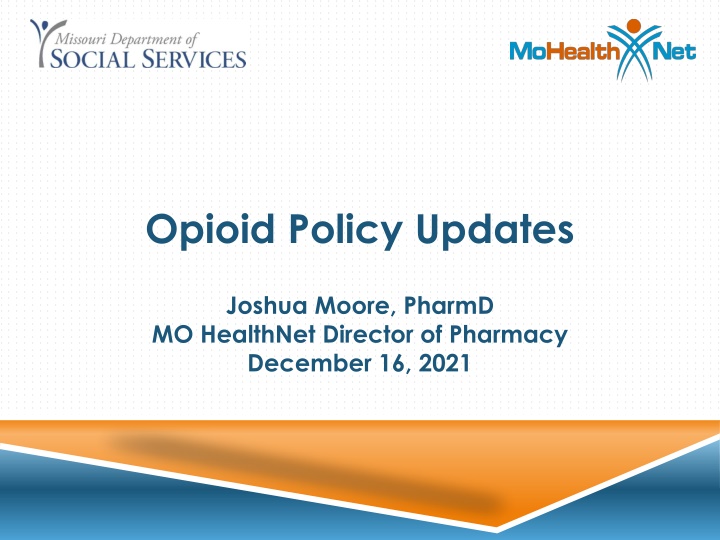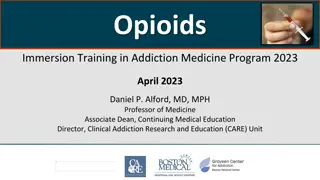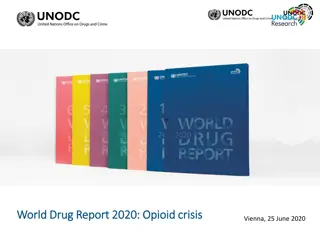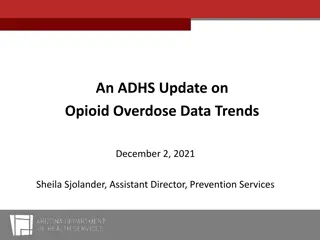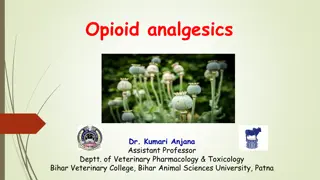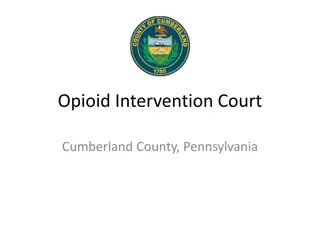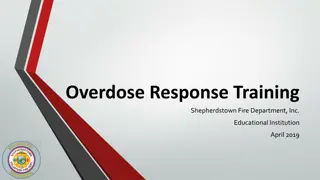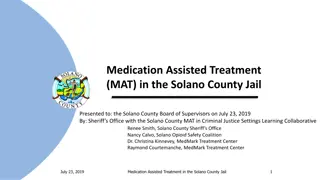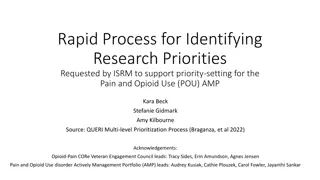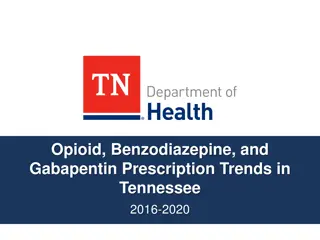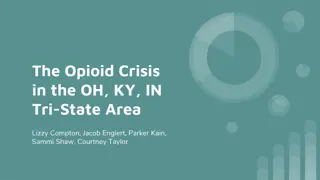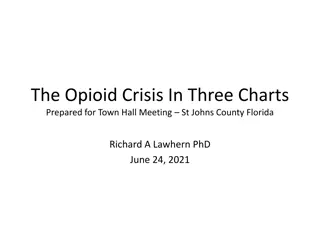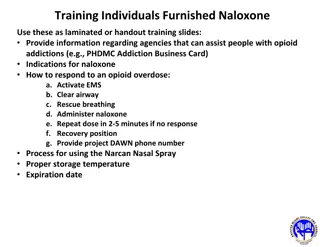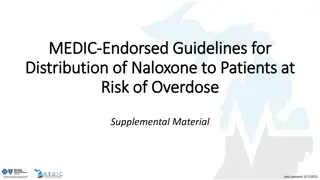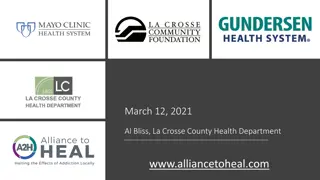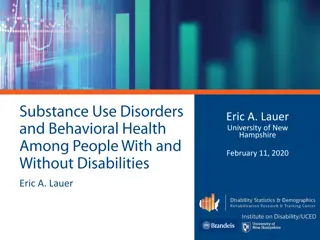Opioid Policy Updates
Analyzing historical opioid utilization data, room for improvement in opioid overdose deaths, non-opioid policy changes to reduce opioid prescriptions, and current opioid policy exemptions for specific patient populations in Missouri HealthNet.
Download Presentation

Please find below an Image/Link to download the presentation.
The content on the website is provided AS IS for your information and personal use only. It may not be sold, licensed, or shared on other websites without obtaining consent from the author.If you encounter any issues during the download, it is possible that the publisher has removed the file from their server.
You are allowed to download the files provided on this website for personal or commercial use, subject to the condition that they are used lawfully. All files are the property of their respective owners.
The content on the website is provided AS IS for your information and personal use only. It may not be sold, licensed, or shared on other websites without obtaining consent from the author.
E N D
Presentation Transcript
Opioid Policy Updates Joshua Moore, PharmD MO HealthNet Director of Pharmacy December 16, 2021
Historical Opioid Utilization by MO HealthNet Participants per SFY 2012 2021 Difference % Difference # of Participants 191,981 109,055 (82,926) -43% # of Claims 945,319 442,854 (502,465) -53% # of Units/Tablets 63,856,453 20,111,663 (43,744,790) -69% Morphine Milligram Equivalents (MME) 791,593,422 211,400,737 (580,192,685) -73% MME per Utilizer 4,123 1,938 (2,185) -53% MME per Claim 837 477 (360) -43%
Still Room for Improvement Opioid overdose deaths, including natural and synthetic opioids*: United States: 65,004 in CY 2019 (up 41,385 from 2012) Missouri: 1,360 in CY 2019 (up 829 from 2012) In the last 12 months ending March 2021, over 72 thousand have died in the United States and 1,470 in Missouri due to opioid overdose References 1. https://www.kff.org/other/state-indicator/opioid-overdose-deaths-by-type-of- opioid/?currentTimeframe=7&sortModel=%7B%22colId%22:%22Location%22,%22sort%22:%22asc%22%7D https://www.cdc.gov/nchs/nvss/vsrr/drug-overdose-data.htm *not limited to Medicaid
Non-Opioid Policy Changes Non-Opioid Agent Restrictions: Removed diagnosis restrictions for diclofenac gel (4/20) and lidocaine patches (10/21) Diclofenac gel utilization has tripled since 3/20 Removed PA criteria from celecoxib (4/20) Celecoxib utilization up approximate 45% since 3/20 Non-Medication Pain Management: Complementary Health and Alternative Therapies for Chronic Pain Management (4/19) Combines the use of chiropractic therapy, acupuncture, physical therapy, and/or cognitive-behavioral therapy Risk Reduction Measures: Clinical Edit for long term use of benzodiazepines (example: Xanax) Utilization decreased by 21% of participants receiving benzos and number of units decreased by 37% from 2019 to 2021 High Risk Therapy clinical edit to increase access of naloxone (4/21) Monthly utilization of naloxone has tripled since implementation Removed PA from buprenorphine/naloxone (2017) Utilization up 78% since 2017
Current Opioid Policy Opioid policy exemptions: Participants diagnosed with cancer or sickle cell disease Participants enrolled in Hospice care or receiving palliative care Initial opioid prescription for opioid na ve participants limited to 7 days and 50 MME per day After the initial fill, participants may receive up to 90 MME of a single agent or 150 MME combined per day for up to 60 days prior to requiring a PA Participants receiving over 150 MME must receive a PA and may require annual review Participants receiving both an opioid and benzodiazepine are required to receive naloxone at least once every 2 years to have on hand
New Opioid Policy Opioid policy exemptions: Participants diagnosed with cancer or sickle cell disease Participants enrolled in Hospice care or receiving palliative care Initial opioid prescription for opioid na ve participants limited to 7 days and 50 MME per day After the initial fill, participants may receive up to 50 MME total per day without requiring PA Participants receiving over 50 MME must have a diagnosis supporting the use of opioids on file
New Opioid Policy - Continued Participants newly receiving over 90 MME must submit progress notes and medical necessity to support the use of opioids Participants already over 90 MME will be allowed to maintain dosage or decrease dose without PA Dosage increases will require a new submission of progress notes and medical necessity Participants receiving both an opioid and benzodiazepine are required to receive naloxone at least once every 2 years to have on hand
Transitioning to New Policy Transition from requiring a PA for participants after two months of therapy and move to MME centered PA limits based on risk Reduce MME accumulation limit from 150 MME per day to 90 MME per day before requiring PA, progress notes, and medical necessity documentation Allow for transparent dose reductions when providers taper a regimen above 90 MME to another regimen still above 90 MME per day (example from 150 MME to 120 MME per day) Revised pharmacy helpdesk procedures to clarify reason for denials and improve interactions with providers
Statistics Monthly MO HealthNet Statistics: 33,000 participants receiving at least one opioid prescription 3,300 participants receiving greater than 150 MME per day 900 participants receiving between 90 150 MME per day 3,000 participants receiving between 50 90 MME per day 25,800 participants receiving less than 50 MME per day MO HealthNet currently manually reviews and approves 800 plus opioid regimens per month
Why? 7 Days on Initial Prescription (existing policy): A patient receiving a 1 day supply for the initial opioid prescription has a 6% chance of being on opioids one year later, this increases to 13.5% for greater than 7 days, and 29.9% for greater than 30 days. 50 Morphine Milligram Equivalents and 90 Morphine Milligram Equivalents: Dosages of 50 99 MME/day have been found to increase risk for opioid overdose two-fold to five-fold compared with dosages of 1 19 MME/day, and dosages 100 MME/day increase risk of overdose up to nine times the risk at 1 19 MME/day. Among a national sample of Veterans with chronic pain receiving opioid treatment and dying of opioid-related overdose, average prescribed dosage was 98 MME day (compared with an average dosage of 48 MME/day among patients not experiencing fatal overdose), suggesting the need for caution before dosages approach 100 MME daily. Most calls today are for participants who are receiving <50 MME and end with an approval after diagnosis is conveyed to helpdesk. These changes will reduce calls and allow staff to focus on higher value calls. References 1. https://www.cdc.gov/mmwr/volumes/66/wr/mm6610a1.htm 2. https://www.cdc.gov/opioids/providers/prescribing/faq.html
